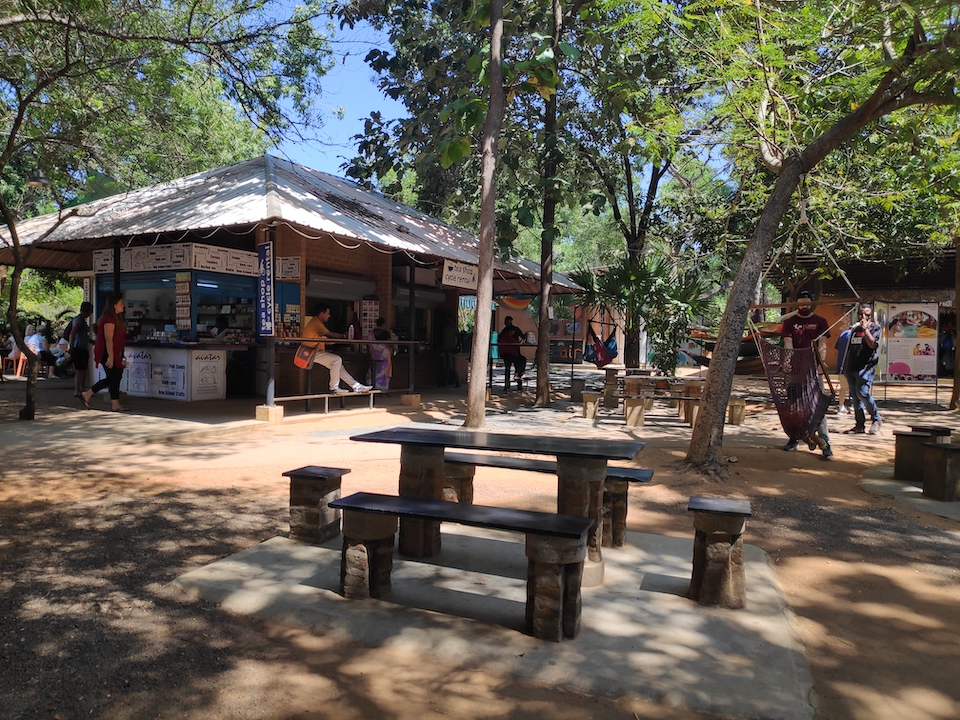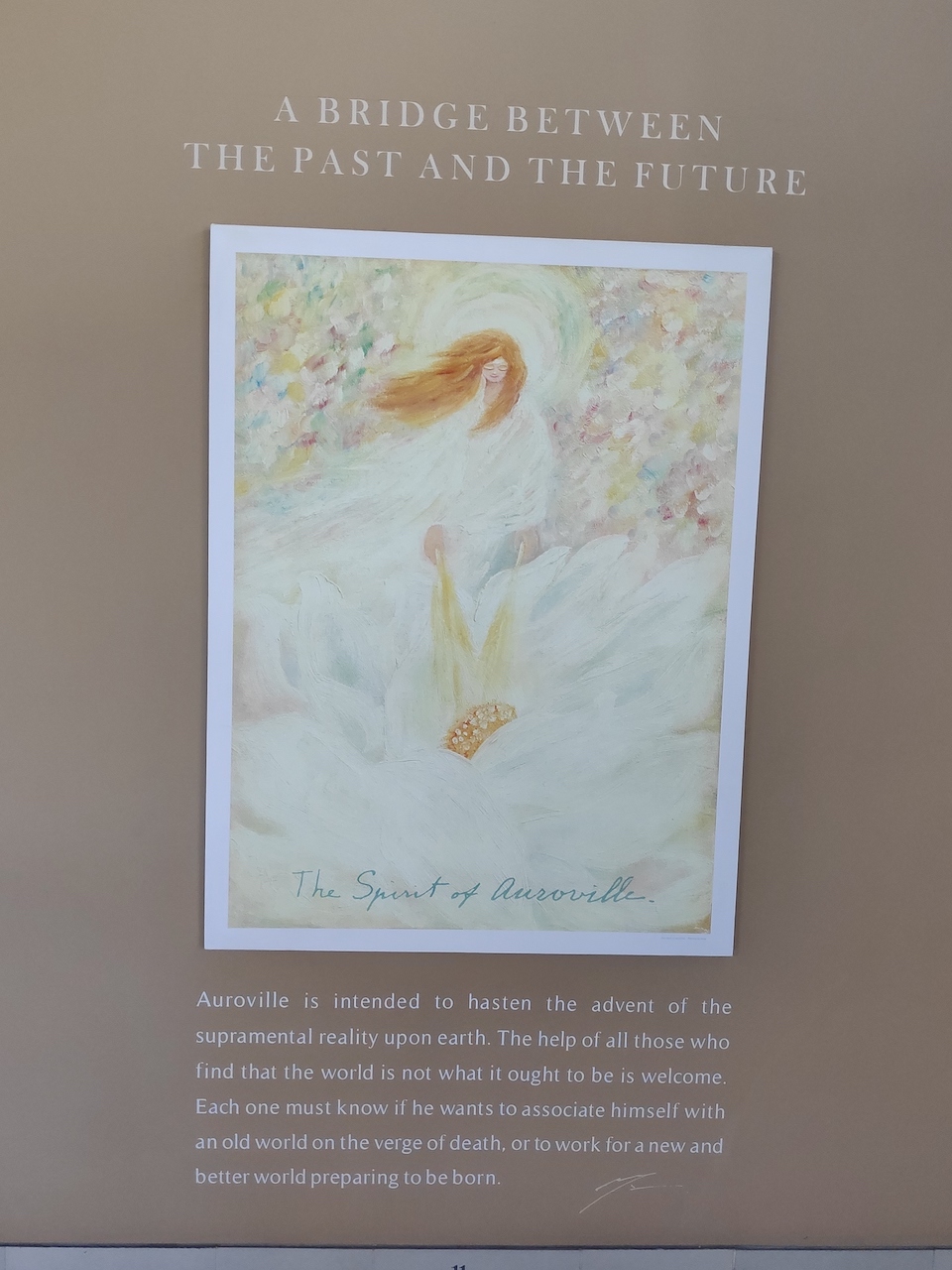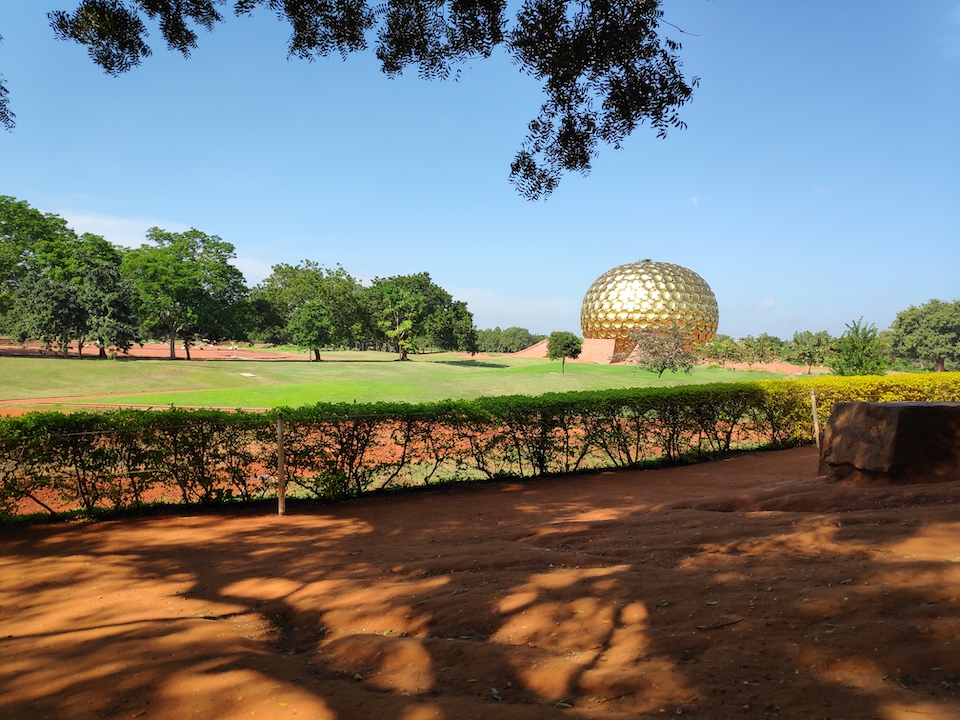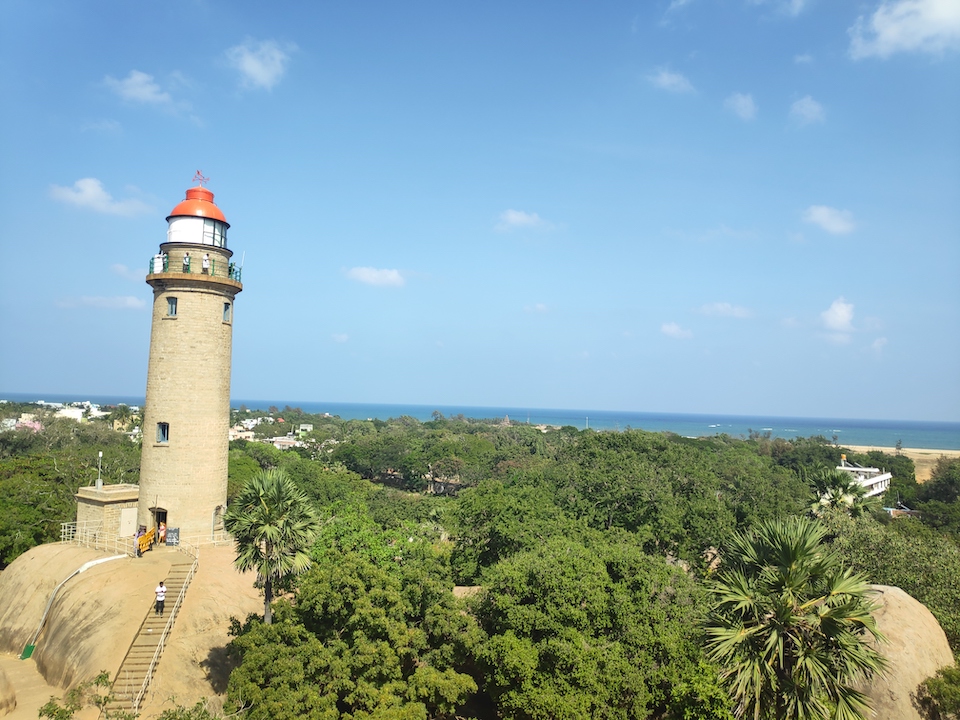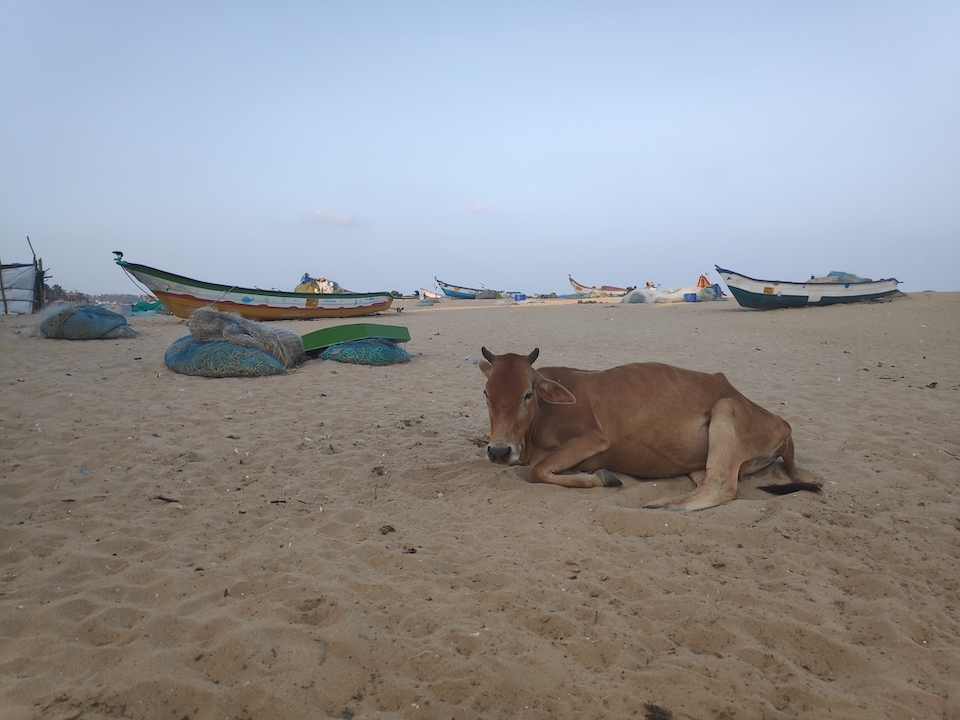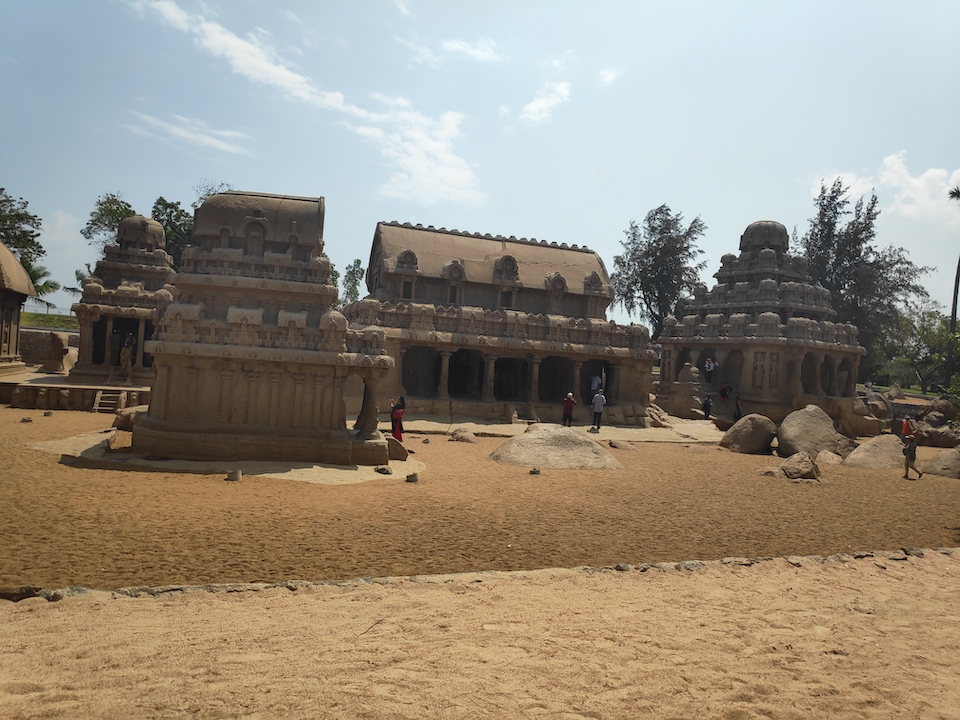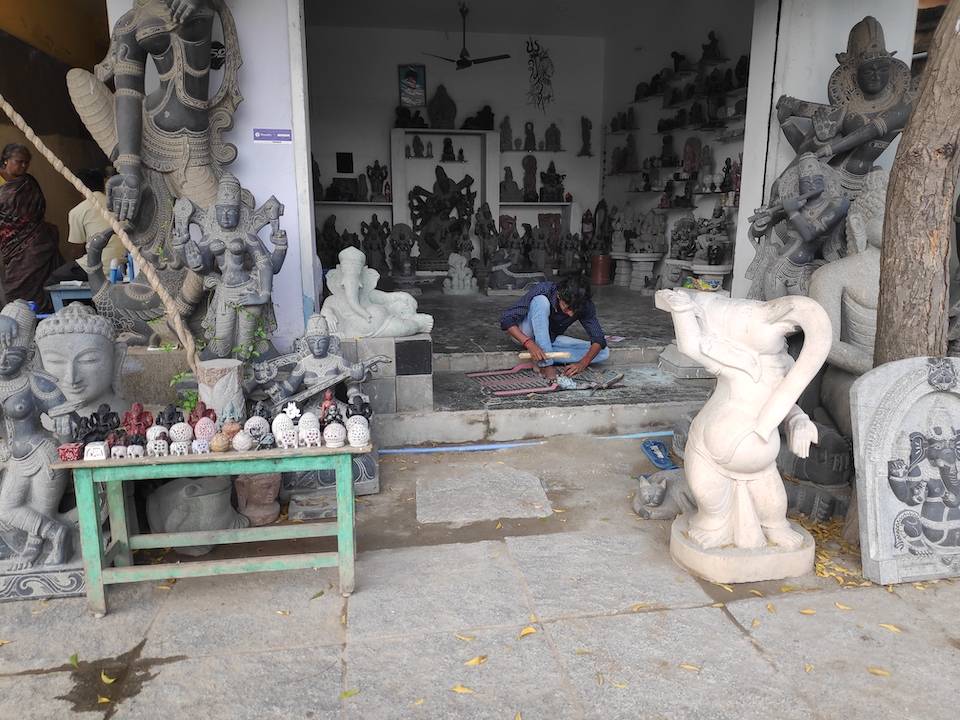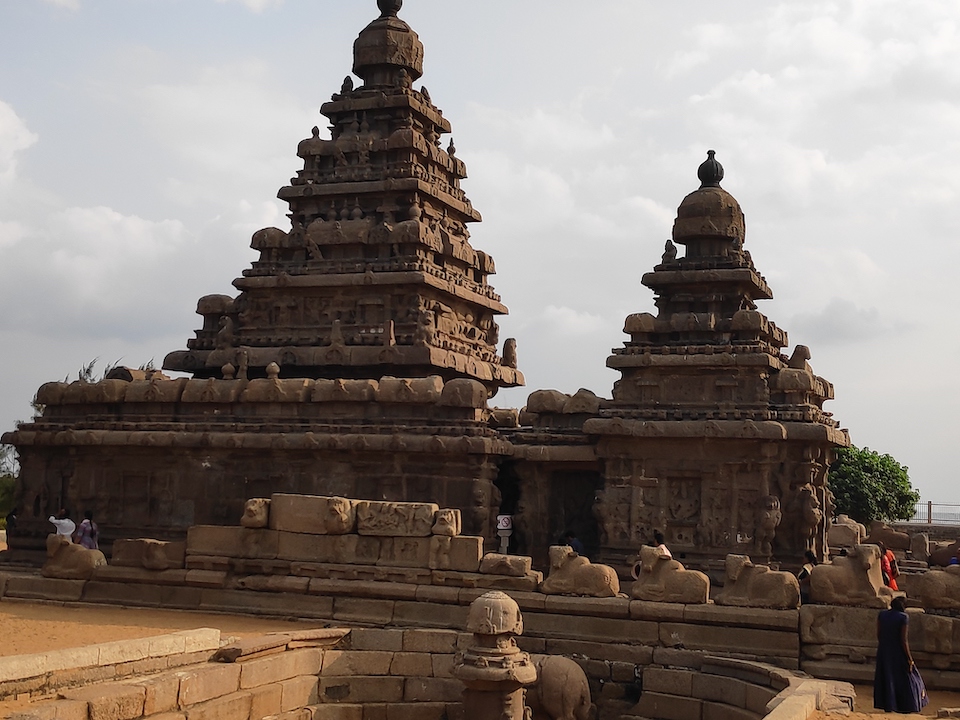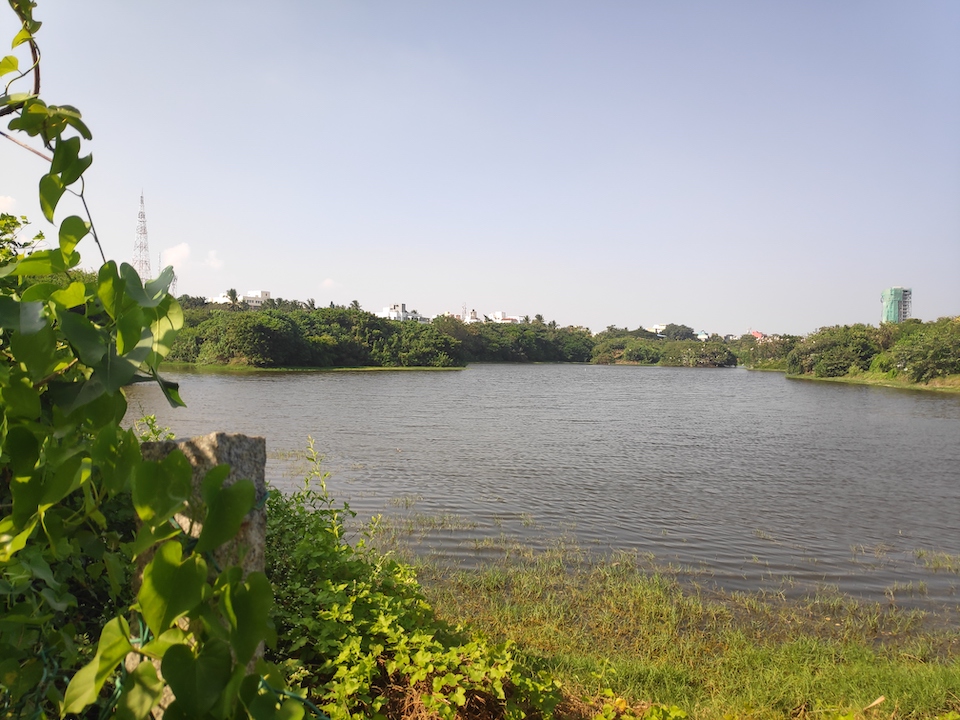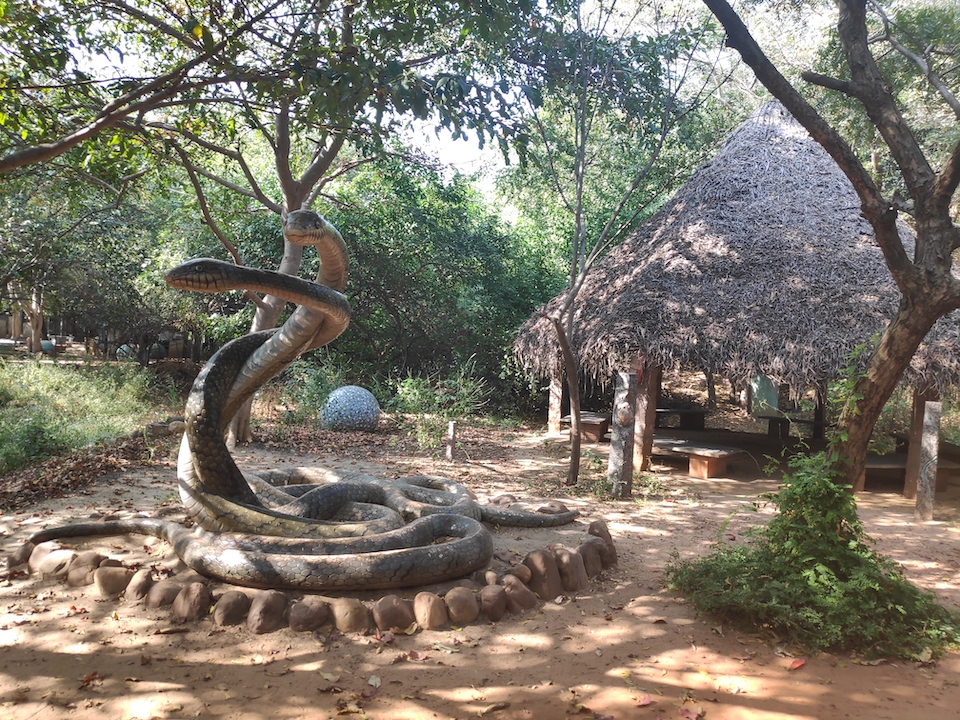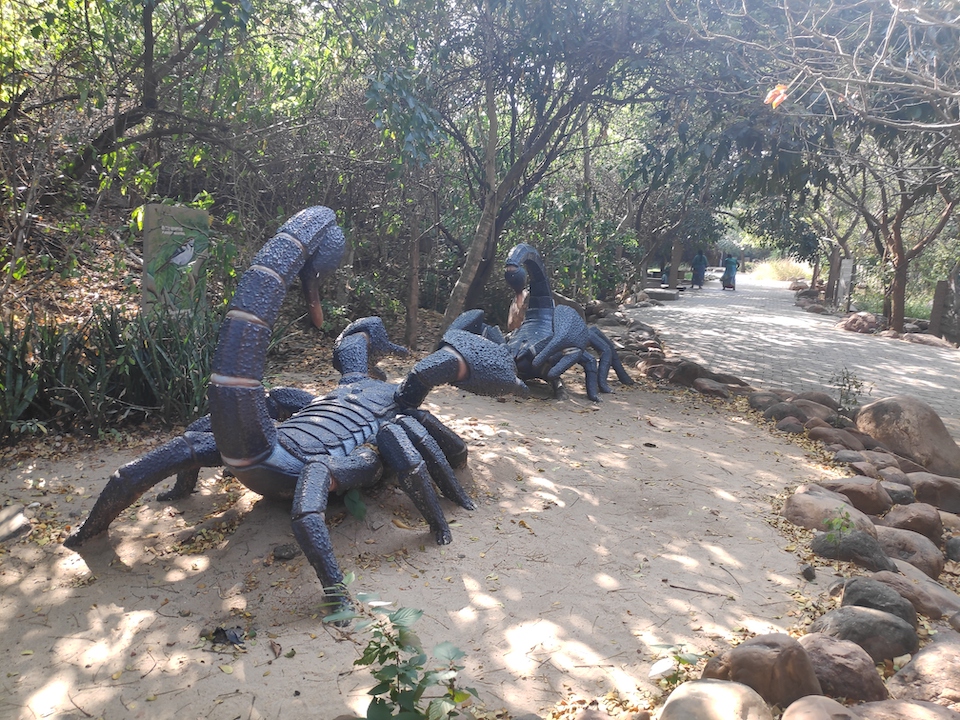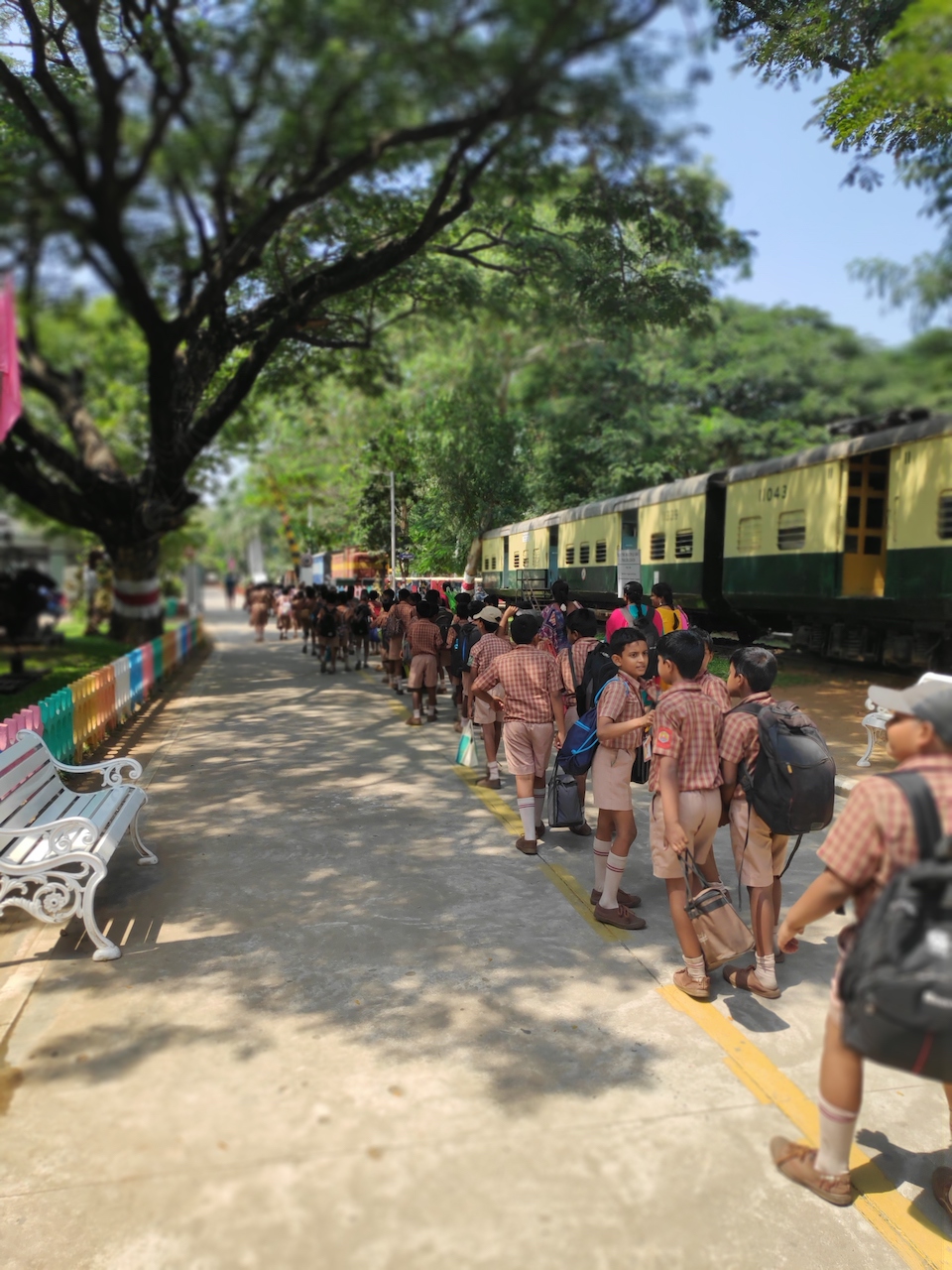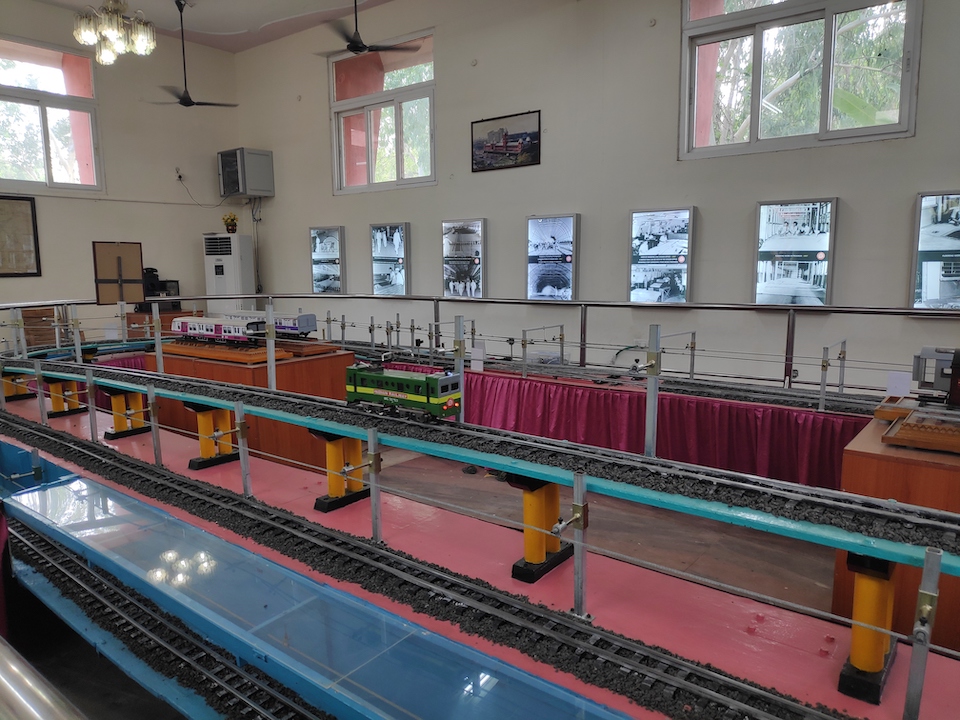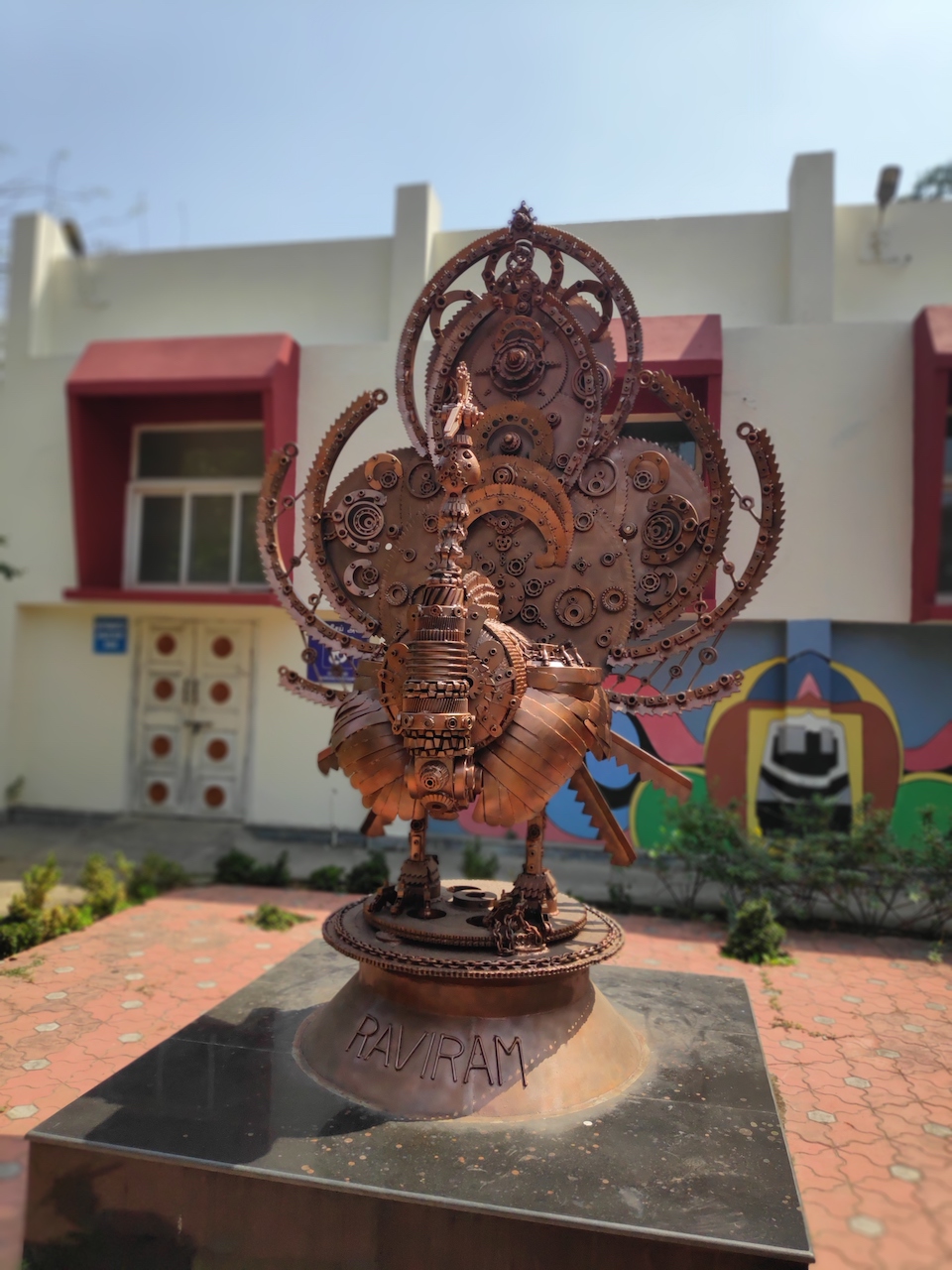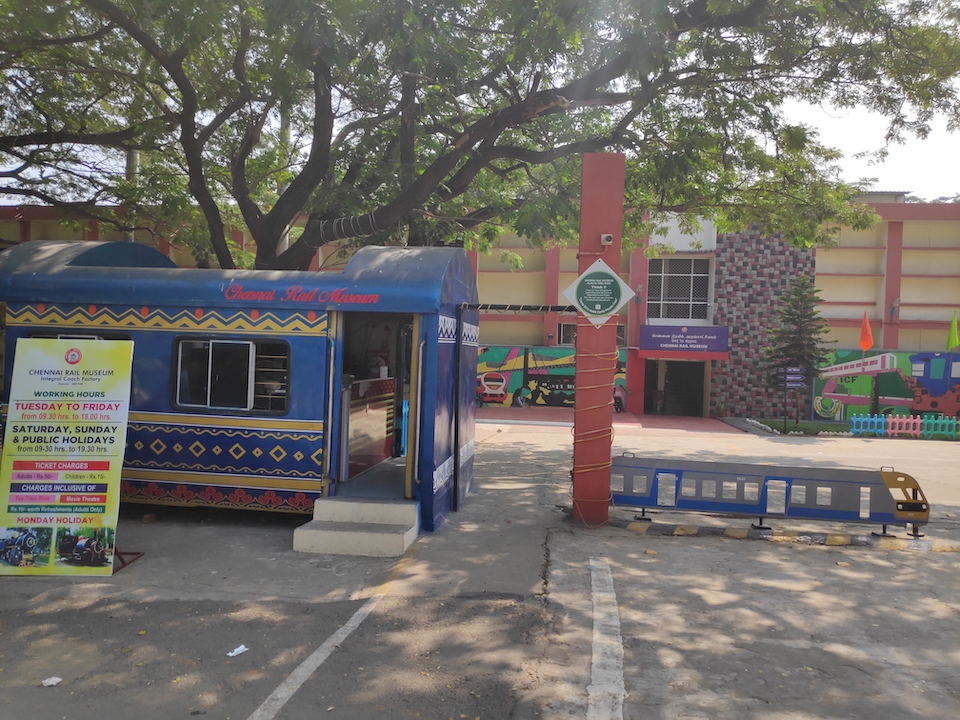
Tamil Nadu – Exploring South India Part 2
Pondicherry – with yet another overnight sleeper bus we arrived in the early hours for our stay in Pondicherry. The former French colonial settlement that still has traces of its French past including decent coffee and croissants along with tree-lined streets and colonial villas. It is certainly cleaner than other parts of India that we have seen, though the blaring horns that bind the whole of India together are just as loud and just as constant away from the pedestrian-only streets of which, thankfully, there are quite a few. There is an abundance of cafes and restaurants, many with a much more western style than we have become used to in India. We slowed our pace while in Pondicherry, enjoying walking and exploring the different experiences in the French Quarter, the Muslim Quarter, White Town. The mood and style change literally street by street.
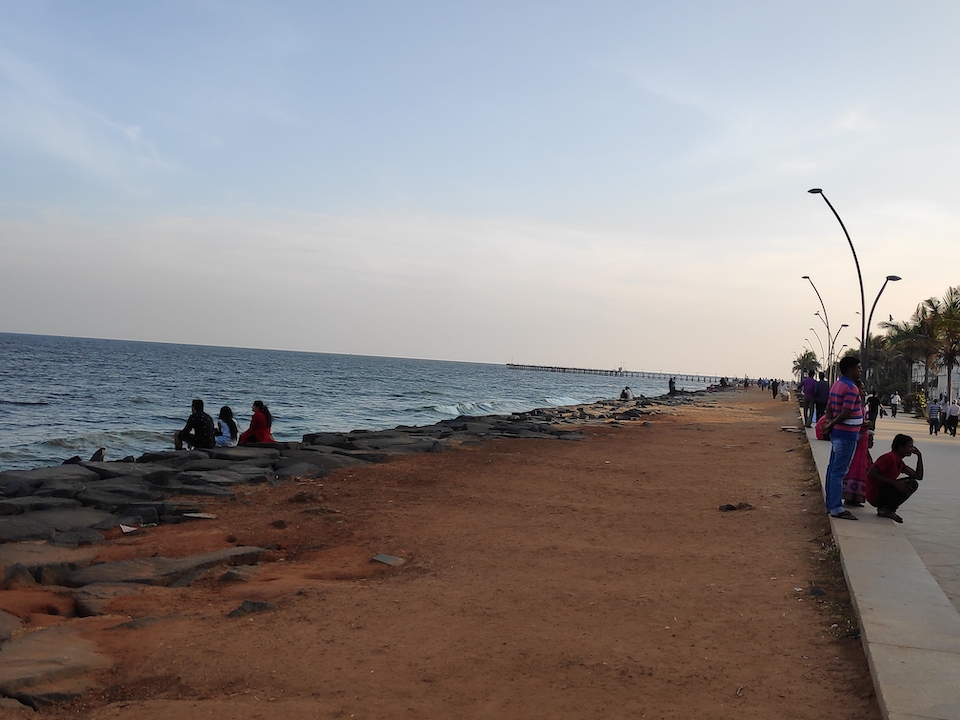
Pondicherry Beach 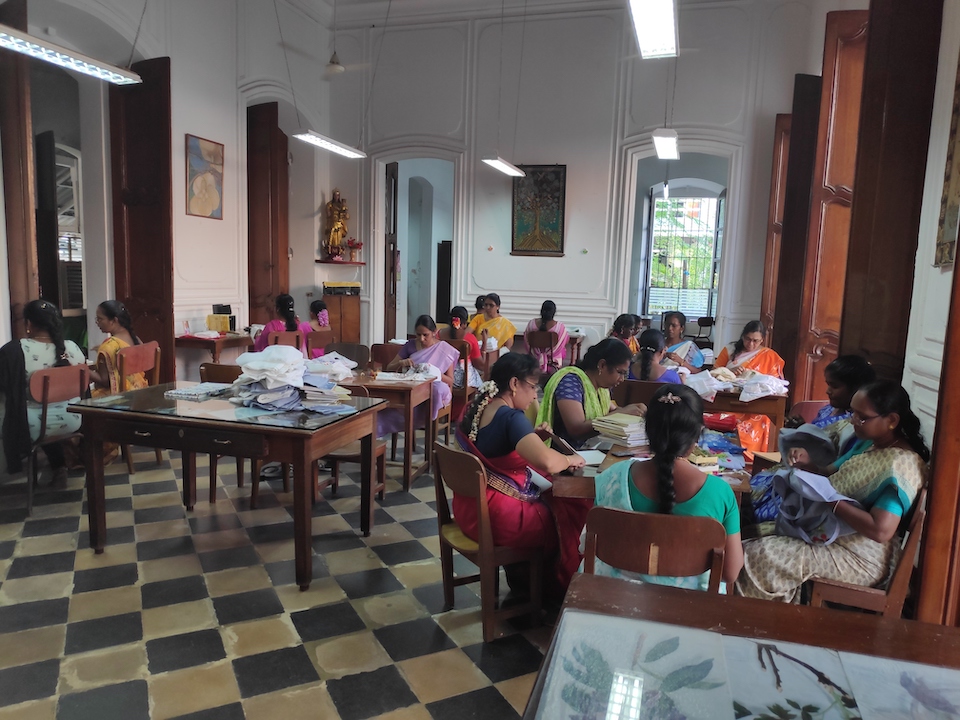
Cluny Embroidery Centre 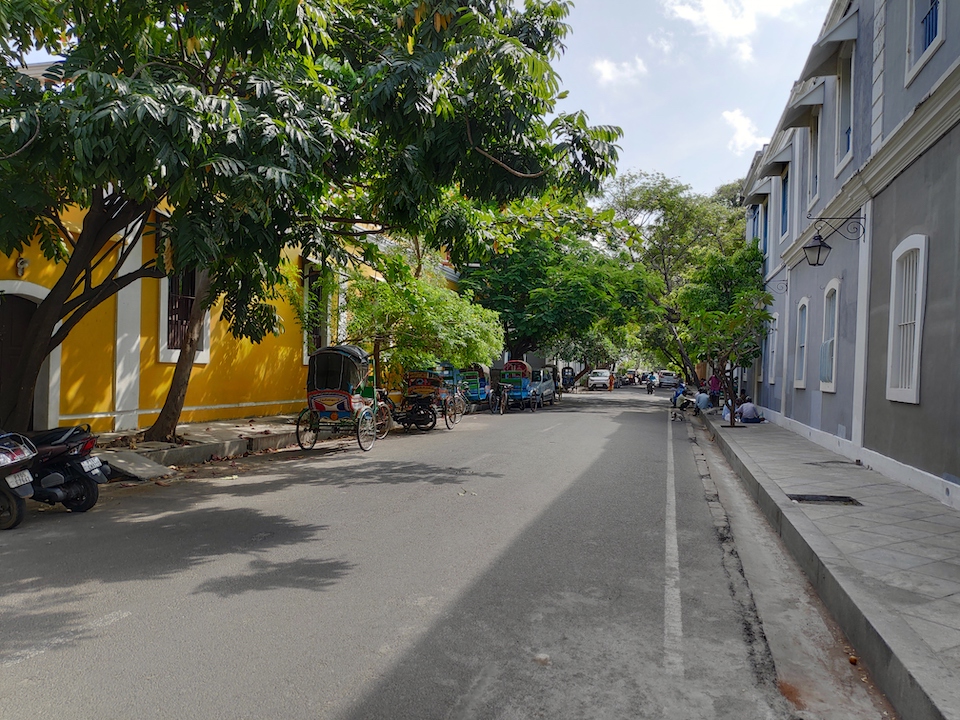
French Quarter
A short distance from Pondicherry town is the township of Auroville. Described as an experimental township, this is a commune of sorts with over 2500 permanent residents and a varied assortment of interns, students and travellers who stay for weeks or months at a time. We only had a day there, driving there on a hired 2-wheeler motor scooter that was part fun and part white knuckle ride. Auroville states that it is not a tourist destination but has a well-designed visitor centre that gives a good initial introduction to the principles and philosophy that led to its being developed in the late 60s.
It is a pristine location, by both Indian and western standards, in a beautiful rural setting that you are free to explore along tracks and roads to the different pavilions. We walked to the farm cafe called Solitude where the meals are prepared according to what is currently in season. Our veg Indian thali was delicious.
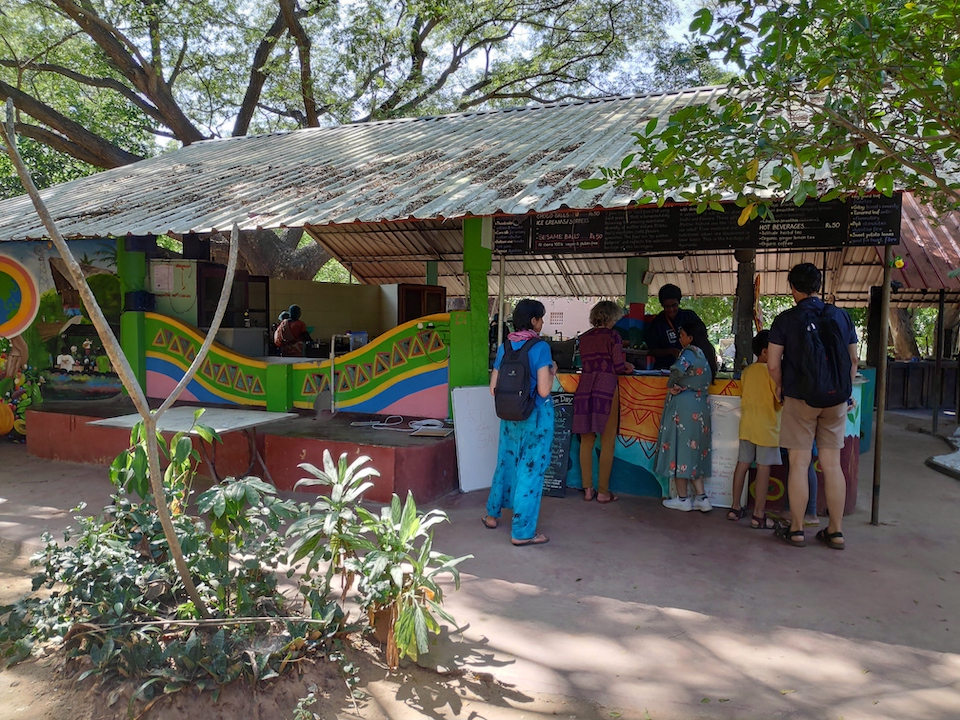
At the centre of Auroville is a large open area called Peace. At its centre is the Matrimandir – a large gold sphere that is intended as a place of silent contemplation. The Auroville website claims that it was never intended to be based on religion or rituals. It also suggests that many Westerners will struggle to understand the reason for the Martimandir and that “Indians, for the great majority, do not need any explanation, they understand it because of their culture”. It is a stunning piece of architecture that we were able to view only from the outside. We saw the inside on video shown at the Visitor centre. Entry booking for the Matrimandir can only be done in person at least 1-2 days in advance. The notion of silent contemplation seemed to have been overlooked by the visitors to the outside viewing location when we were there. It was anything but silent but a reflection maybe of the contrast of what Auroville purports to be and the outside world.
Back at the visitor centre, we looked at the boards giving information about Auroville Village Action Group (AVAG), part of the Auroville Bio-region Development Actions. There are numerous sustainability and social change projects and initiatives based out of Auroville. With too little time to find out more during our visit, it is definitely on the list to find out more about in the future.
Leaving Pondicherry by local bus we head to Mahabalipuram, also known as Mamallapuram – many towns and cities have two names. In many instances, the name changes are reverting back to historical names that were changed during colonial times and then changed back post-independence. The local bus took 2 hours along the Eastern Coastal Road (ECR), which was quite scenic and with glimpses of the sea every now and again.
Mamallapuram is a pretty laid back seaside town. The beach is big and relatively litter-free, and the first beach we have encountered that is nice to just sit and relax. Surfing lessons are available and it was fun watching the progression of some of the would-be surfers gaining the confidence to ride the waves. In the late afternoon, some of the local fishing boats start to head out to fish, many with black smoke streaming behind them as their small engines battle through the incoming tide. Cows and dogs wander up and down the beach too, all of this making it a lively beach to sit and watch. Grabbing a cold beer in one of the seafront cafes – unlicensed so won’t be on the menu – add to the relaxation.
The village close to the beach has a bit of a hippy feel to it, with lots of small clothing and handicraft shops. A local shopkeeper told us that business has not been good for the last 3 years and this may explain why there seems to be a lot of hassling from shopkeepers to look at their goods along with very persistent jewellery and bag seller on the beach. There are lots of cafes and restaurants with menus to appeal to the tastes of western tourist, but we preferred to stick with the Indian cafes along the main road after overindulging in croissants in Pondicherry.
We took advantage of the laid back vibe in Mahabalipuram to unwind a little. In between visits to the various temples and monuments built during the Pallava Dynasty we sat and walked on the beach, or took time out just to read or top up our journal entries. Within walking distance of the beach is the Shore Temple, an 8th century free-standing stone temple that is one of many World Heritage-listed temples in the area. The stone sculptures on the temples are incredibly detailed and depict stories of various Hindu gods. The stonework continues as a local skill, presumably being handed down from generation to generation, with an abundance of shops where the craftsman can be seen working on large and small stone sculptures today.
Heading on to our final stop on this trip of Chennai, we felt suitably recharged expecting that we would need it as we headed into what we assumed was going to be a typical big-city experience. We had chosen a hotel that was a little out of the city in a suburban area called Poes Garden and on checking in were advised that Chennai did not have much that would interest tourists since it was primarily a business city. Undeterred, we decided to scratch under the surface and see what we could find that was a little less obvious. We were not disappointed and ended up having a really enjoyable couple of days with some unexpected gems of things to see and do.
Tholkappia Poonga or Adyar Eco Park did not appear in any of the “things to do” guides we had seen. In fact, we only found it by scanning over the map. Arriving at the park, we were nearly refused entry as it is necessary to book in advance as a guide needs to escort you through the park. We eventually managed to get in and were given a high-speed tour through the park. Long enough to appreciate the thought that had gone into it, with nature paths running around the Adyar Estuary and information throughout about the plants, animals and insects that could be found there. There were also a number of large nature-related sculptures. It was hard to believe this was in the middle of one of the largest cities in India.
Another great find was the Chennai Rail Museum. Our expectations were not too high, but we loved this place. Not only was the entry ticket super cheap – 40 rupees each (about 50pence), it also included a cup of tea in the entry price. The museum told gave detailed information about the history of the railway in Indian and coach building, still completed at the factory on the same site. There were also displays of vintage trains and coaches in a large outdoor area that included sculptures made by artists from steel from the railways. We were enjoying ourselves so much we lost track of time and ended up racing back to the hotel to pick up our bags and fly back to Kochi.
Another fantastic trip, showing us so many facets of India. We had thought 4 months was a long time to spend here, but are now realising we are barely scraping the surface of this vast and complex country. Our next trip takes us to Hyderabad.
Follow and like us to be notified of future blogs!



